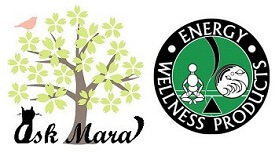What you should be aware of

Environmental toxins are everywhere, including many common household and personal care products. Have you ever read the label on your cleaning products? How about your toothpaste or shampoo? Ever wonder if the plastic container you are using is leaching out bad stuff, especially going from the cabinet to the refrigerator. With my RSD, I have had to make several lifestyle adjustments including eating healthy and exercising. I have also paid close attention to food labels to make sure I am not eating a lot of preservatives, food colorings, and additives.
One day when I was getting ready, I reached for my body lotion and started reading the ingredients and it dawned on me. Not only do we need to be aware of what we are eating, we also need to be aware of the ingredients on personal care items and cleaning products. I have replaced my personal care products and cleaning products with more natural alternatives and feel much better about using them. Did you know that cleaning products are the leading cause of toxic air pollution in our homes, according to the Consumers Guide to Effective Environmental Choices. Being aware of environmental toxins, their link to chronic inflammation and limiting your exposure is beneficial for your overall heatlh.
Environmental Toxins in Common Household Products
- Bisphenol A or BPA is a chemical that is used in plastic products such as water bottles, baby bottles, plastic wrap and food packaging. There is some concern about brain and behavioral effects on fetuses and young children with our current exposure levels. If you can, start switching your plastic products to glass.
- Oxybenzone is a chemical used in cosmetics like sunscreens, lip balms and moisturizers. It has been linked to hormone disruption and low-birth weights in babies. This compound has shown up in the urine of 97% of Americans.
- Fluoride a form of the basic element fluorine is found in toothpaste and tap water. It is advised by the American Dental Association that children under 2 do not use fluoride toothpaste because it is neurotoxic and has potentially tumorigenic if swallowed. Currently, the government supports the current fluoride levels but studies continue on long-term exposure and cancer.
- Parabens are a well known environmental toxin which are synthetic preservative are found in many personal care products such as moisturizers, shampoos and shaving products. They have been found to cause hormone disruption and cancer in animals. The FDA feels current levels in these products are safe, but why chance it when paraben free products are available.
- Phthalates are the chemicals that give plastic its flexibility and resilience. It is found in toys, raincoats, shower curtains, vinyl flooring. Animal studies have shown a reduced sperm count and reproductive abnormalities with evidence linking to liver cancer in humans. Legislation was passed in 2008 by Congress banning 6 phthalates from toys and cosmetics.
- Butylated Hydroxyanisole (BHA) is another well known environemntal toxin that is an additive that preserves fats and oils in foods and cosmetics. This additive may promote cancer in lab animals and the government monitors its levels in products.
- Perfluorooctanoic Acid (PFOA) is a component of Teflon and it has been found in tap water and non-stick cookware. It has been found to cause hormone disruption and reproductive abnormalities in both human and animal studies. The EPA wants makers to stop using it by 2015.
- Perchlorate is an oxidant in rocket fuel and has been found in drinking water, soil, and some vegetables. It disrupts hormone production by the thyroid.
- Decabromodiphenyl Ether (DECA) is a flame retardant that is found in furniture, carpeting and electronics. It has shown to cause permanent learning and memory and hearing deficits and a decrease in sperm count.
- Asbestos is a naturally occurring fibrous mineral that was used in housing materials like insulation and drywall. It leads to a fatal cancer known as Mesothelioma. Products containing asbestos are not always labeled and although most manufacturers no longer use it, it has not be banned.
- Ammonia is used in many cleaning products and can affect the respiratory system, the skin, and can be very harmful to the eyes. With continued exposure to ammonia one’s ability to smell it lessens, increasing their risk to over exposure. Over exposure can lead to chronic problems such as inflammation of the respiratory system and eye irritation.
- Benzene is a chemical used in manufacturing rubber, paint, plastics, drugs and pesticides. It is a known carcinogen especially when exposed to it over a long period of time.
- Chlorine which is found in most drinking water sources. It has been shown to increase the risk of some cancers by over 40%.
- 1,4-Dioxane is primarily used as a solvent in the manufacturing of chemicals and laboratory reagents and is a trace chemical in some cosmetics, shampoos and detergents. Studies have shown liver and kidney damage in animals and with long term exposure liver cancer.
- Formaldehyde is a colorless and flammable chemical with a strong smell that is used in building materials and many household products. Surveys of professionals exposed to formaldehyde in their work, such as embalmers, have indicated an increased risk of leukemia and brain cancer.
- Naphthalene is used in the production of phthalic anhydride and mothballs. Short term exposure through inhalation, ingestion, and the skin has been associated with hemolytic anemia, liver and neurological damage. Cataracts and retina damage have been reported due to long term exposure. The EPA has classified this as a possible human carcinogen.
- Vinyl Chloride is a colorless flammable gas that is artificial and used in the making of PVC. This includes pipes, wire and cable coatings, and packaging material. Breathing high levels of vinyl chloride can cause a person to feel dizzy or become sleepy. Long term exposure can cause nerve damage and it is also known as a carcinogen.
- Xylene is a chemical found naturally in coal and petroleum. It can be found in items like paint, paint thinners and varnish. Long term exposure can cause a variety of issues including the brain and nervous system.
- Sodium Lauryl Sulfate (SLS) and Sodium Laureth Sulfate (SLES) are commonly used in many soaps, shampoos, detergents, toothpastes and other products that “foam up”. Both of these chemicals are very effective foaming agents known as surfactants. SLS and SLES are esters of Sulphuric acid and are commonly contaminated with dioxane, a known carcinogen.
These items are around us everyday in our homes. If you are not paying attention to the ingredients in your personal care and cleaning products you should be. I understand that you can’t replace everything all at once, but next time you need some things, start looking for healthier alternatives. I also understand that some things we still need to use but we can limit our exposure.
Tips to Protect Yourself from Environmental Toxins
- Replace your plastic containers for glass containers.
- Replace your chemically laden cleaning products with more natural ones. Nature’s Sunshine has come out with Nature’s Fresh a line of cleaning products that are plant based, biodegradable, non corrosive and caustic, chemical free, dioxane free, and phosphate free.
- Replace your personal care products with more natural ones. An example would be to use a deodorant that doesn’t contain aluminum, or body lotions that contain no parabens.
- Learn more about cleaning up our cells from toxins with our Cellular Detoxification Newsletter. It includes recipes and tips.
For Personal Care Items, you can make your own or try some of my favorite products including Dr. Bronners Castile Soap and Alba Botanical Body Lotion to limit your exposure to environmental toxins.
If you do have to use products with with these environmental toxins and chemicals in them, please make sure to take the following precautions.
- Read the label and follow the manufacturer’s directions.
- Keep these type of products in their original bottles or containers so they are always properly labeled.
- Do not mix household products together.
- Make sure you are in a well-ventilated area when using these products.
- Wear protective clothing such as goggles, long sleeves, long pants, socks and shoes.
- Do not eat or drink while using these products so you don’t get any on your food and ingest them.
- Make sure to take extra precaution with children around when using and storing products.
Do Your Own Research
Did you know that there is a Consumer Product Database of household products that contains detailed information, including material safety data sheets, on thousands of products. If you are curious about what is in your cleaning products or under arm deodorant, this is an excellent resource.
Books you can use for Reference
Consumers Dictionary on Cosmetic Ingredients
Consumers Dictionary on Food Additives
References: Time Magazine Article, Cancer Prevention Daily, US Department of Health and Human Services
